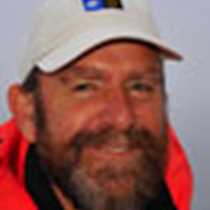Whitby, England
After two weeks of maritime pilgrimage to some of the most religious sites in the British Isles, we must surely have attracted the attention of the Gods. We have walked among sacred yew groves in Ireland, landed on beaches where our ancestors first set foot, gazed awestruck on sacred standing stones and paid homage at sites where brave monks kept the flame of Christian learning alight. Sea gods, land gods, gods of sun and gods of thunder, we have met them all; they have watched over our voyage of discovery. There is no doubt that we have their approval: how else could we have come safely through rough seas to Scilly, landed on far-flung St. Kilda or motored home at sunset from the stones of Callanish? The gods are still with us this morning: they calm the sea so that we may come in by Zodiac between the giant breakwaters of Whitby Harbour. They unveil the sun just as we climb ashore.
We are suddenly among a throng of English pilgrims, bearing ritual ice-creams. We visit the hilltop site of Whitby Abbey, where Celtic and Roman Christianity found reconciliation in the 6th century. But for those of us who, over the years, have shared incredible adventures at sea on board Endeavour, this tiny Yorkshire harbor, our last site of pilgrimage, is the spiritual home of our ship.
The young James Cook lodged here from 1746 to 1749, in the house of Captain John Walker, a Quaker ship-master. We climbed the stairs to the attic where, as a young seaman apprentice he stayed up late studying mathematics, navigation and astronomy by candlelight. He never forgot the family who were his springboard to a brilliant naval career. Nor the town where he had served his apprenticeship at sea, for in 1768, when the Navy needed a reliable vessel which would take him to the South Seas, he came back here to commission a sturdy Whitby collier. It was renamed Endeavour, to become the first ship on which he sailed into history as the greatest ship’s captain, navigator and explorer. Our own vessel, once the ‘Caledonian Star’, was renamed Endeavour last year in a ceremony carried out here in Whitby. By another of those remarkable quirks of fate, which have blessed our voyage, the replica Australian-built Endeavour is in dock here this month and many of our guests climbed on board to marvel at her small size and complex rigging. How 94 men survived the perils of uncharted oceans in this tiny vessel, 106’ long and barely 30’ wide, for 3 epic years, defies belief.
Our own sturdy ship and intrepid crew sail for Tower Bridge this afternoon to complete our modest circumnavigation, inspired by the same spirit of adventure that took Cook round the world.
After two weeks of maritime pilgrimage to some of the most religious sites in the British Isles, we must surely have attracted the attention of the Gods. We have walked among sacred yew groves in Ireland, landed on beaches where our ancestors first set foot, gazed awestruck on sacred standing stones and paid homage at sites where brave monks kept the flame of Christian learning alight. Sea gods, land gods, gods of sun and gods of thunder, we have met them all; they have watched over our voyage of discovery. There is no doubt that we have their approval: how else could we have come safely through rough seas to Scilly, landed on far-flung St. Kilda or motored home at sunset from the stones of Callanish? The gods are still with us this morning: they calm the sea so that we may come in by Zodiac between the giant breakwaters of Whitby Harbour. They unveil the sun just as we climb ashore.
We are suddenly among a throng of English pilgrims, bearing ritual ice-creams. We visit the hilltop site of Whitby Abbey, where Celtic and Roman Christianity found reconciliation in the 6th century. But for those of us who, over the years, have shared incredible adventures at sea on board Endeavour, this tiny Yorkshire harbor, our last site of pilgrimage, is the spiritual home of our ship.
The young James Cook lodged here from 1746 to 1749, in the house of Captain John Walker, a Quaker ship-master. We climbed the stairs to the attic where, as a young seaman apprentice he stayed up late studying mathematics, navigation and astronomy by candlelight. He never forgot the family who were his springboard to a brilliant naval career. Nor the town where he had served his apprenticeship at sea, for in 1768, when the Navy needed a reliable vessel which would take him to the South Seas, he came back here to commission a sturdy Whitby collier. It was renamed Endeavour, to become the first ship on which he sailed into history as the greatest ship’s captain, navigator and explorer. Our own vessel, once the ‘Caledonian Star’, was renamed Endeavour last year in a ceremony carried out here in Whitby. By another of those remarkable quirks of fate, which have blessed our voyage, the replica Australian-built Endeavour is in dock here this month and many of our guests climbed on board to marvel at her small size and complex rigging. How 94 men survived the perils of uncharted oceans in this tiny vessel, 106’ long and barely 30’ wide, for 3 epic years, defies belief.
Our own sturdy ship and intrepid crew sail for Tower Bridge this afternoon to complete our modest circumnavigation, inspired by the same spirit of adventure that took Cook round the world.




